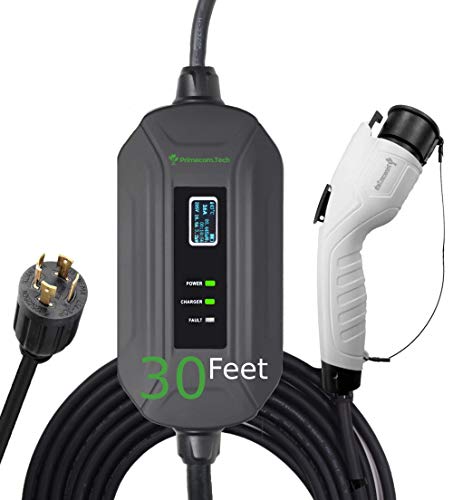Tony left out one other "player" in the EVSE market . . . Leviton has a "32A" L2 EVSE available in their EVB32 series. It is not meant to be portable, but it could and can be easily relocated as well as transported in an EV for opportunity charging at a relative or friend's house, or even at an RV Park. A "32A" EVSE is a perfect match for a dedicated circuit protected by a 40A breaker. Per the NEC, you need to derate the load on such a circuit to 80% of 40A , or 32A max. In most cases this means that the wiring needed for such must be 10AWG (or greater).
If you want to hook up a 40A EVSE, the circuit must be rated and protected at 50A (because 80% of 50A is 40A). This requires much bulkier, and more expensive insulated (usually copper) wiring; in most cases 6AWG. 6AWG is really BIG and far less flexible to work with. Most older homes will have just one 50A dedicated circuit pre-wired for their electric range, and probably at least one 30A for an electric drier outlet, and maybe one or two others 40A rated for HVAC systems and water heaters. If you're lucky you may have a spare 40A circuit in your existing breaker box on the side of your house, already pre-wired to a 240V outlet most likely in the garage. If not, the higher the amperage of the outlet receptacle desired, the greater the installation cost of the new wiring from the breaker box, (assuming you have a spare 40 or 50A double pole breaker, or at least room to add one without exceeding the maximum rating of your service entry main power breaker).
The charging time from an EVSE rated to 32A typically would be 4 to 5 hours, and at most 7.5hours (worse case) for an extended charge of a fully depleted battery. Most people schedule their charging between 11am and 7am, when electric rates are lowest. Therefore, you can if you wish, but you certainly don't need to charge any faster than 32A to complete a full recharge by the next morning's scheduled departure time. To charge at higher (than necessary) amperages is potentially more risky, if your existing wiring is old or not completely encased in conduit from the breaker box all the way to the outlet receptacle. The higher the charging rate, the hotter the EVSE will get as well as all the wiring to and from, and as well as putting a higher heat load on the battery that must be cooled by the BMS while charging. More cooling demands from the battery, effectively lowers the efficiency of the onboard charger. In addition, there is more electrical stress and heat dissipation on wiring insulation, the higher the current through the power conductors.
Personally, I would not want to draw 40A "continuously" through any household wiring and into my EV, unless it was newly (and properly) installed per code, using only recently manufactured electrical materials. Most EVs are relatively new, but the infrastructure wiring in A LOT of homes is not!
Again, it has to be emphasized that most of the EVSEs being promoted in this thread are NOT UL approved! That did not stop me from recently buying a JuiceBox, and although it is capable of charging my RAV4 EV at a full 40A, I am using it at 32A, because I live in a fairly old house! :mrgreen:




























